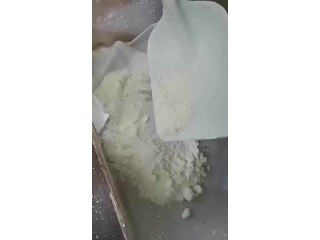Phosphatidylserine Cas 51446-62-9 Manufacturer & Supplier
Sep 28th, 2022 at 03:51 Other Chemicals Boyle Heights 47 views Reference: WJxboX3KdgwLocation: Boyle Heights
Price: Contact us
Phosphatidylserine Cas 51446-62-9 - Buy Phosphatidylserine,Cas 51446-62-9 Product manufacturer and supplier from China, Please contact us by Live Chat on the bottom right.
Essential details
| CAS No.: |
51446-62-9 |
| Other Names: |
1 2-Distearoyl phosphatidyl serine |
| MF: |
C42H82NO10P |
| Place of Origin: |
Shandong, China |
| Grade Standard: |
Agriculture Grade, Electron Grade, Industrial Grade, Reagent Grade |
| Purity: |
50% |
| Appearance: |
White yellow powder |
| Model Number: |
ZZW |
Supply Ability
| Supply Ability | 1000 Metric Ton/Metric Tons per Year |
Packaging & delivery
25KG/DRUMQingdao;Shanghai
| Packaging Details | |||||||
| Port | |||||||
| Picture Example: | |||||||
| Lead time: |
|
Product Description
Phosphatidylserine Quick Details
Chemical Name: Phosphatidylserine/ PS
CAS No.: 51446-62-9
Molecular Formula: C42H82NO10P
Molecular weight: 792.081
Appearance: Fine yellow powder
Assay: 20@% 50% 70% powder
Phosphatidylserine Typical Properties
| Items | Standard |
| Color and Appearance | Fine yellow powder |
| Odor | Characteristic |
| Taste | Characteristic |
| Identification | Same with standard |
| Phosphatidyl serine | ≥20% |
| Phosphatidylethanolamine | ≤16% |
| Phosphatidylinositol | ≤12% |
| Phosphatidylcholine | ≤20% |
| Peroxide value | ≤10meq/KG |
| Loss on Drying | ≤5.0% |
| Heavy metals | ≤10PPM |
| Arsenic | ≤1PPM |
| Lead | ≤3PPM |
| Total plate count | ≤10000cfu/G |
| Total yeast mold | ≤1000cfu/G |
| E.coli. | Negative |
| Salmonelia | Negative |
| Staphylococcus | Negative |
Physical and chemical properties
Pure PS is a white waxy solid, soluble in most non-polar solvents containing a small amount of water and insoluble in anhydrous acetone. It can be extracted from tissues and cells by chloroform methanol extraction method. When PS dissolves in water, most insoluble lipids form micro-clusters except for a few true solutions. At pH 7, PS has two negative charges and one positive charge, leaving a net negative charge. Metal salts of fatty acids are hydrolyzed by weak alkali, and the rest is not hydrolyzed. Fatty acids, serine and glycerol phosphate are produced by strong alkali hydrolysis. PS exposed to air is easy to be oxidized, the color gradually deepens, from white to yellow, and finally black. The natural PS is almost free from alcohol. The saturated PS and alcohol form a staggered chain gel. The interaction of two palmityl phosphatidylserine with 5% alcohol at room temperature induces the formation of regular gel.
The structure of PS consists of three parts:
the head of hydrophilic Glycerol Skeleton and the tail of two long hydrocarbon chains. The head is composed of three groups, serine residue and phosphoric acid residue, and the other two light groups of C-3 glycerol are connected with fatty acid to form tail respectively. Compared with C-1 fatty acids, C-2 fatty acids have longer carbon chains and more unsaturated bonds. Phosphatidylphthaleine serine (PS) refers to a group of compounds, not a single component, which is due to the great changes in the ethylphthalide residues of products extracted from different sources. PS is amphiphilic, that is, it is hydrophilic and lipophilic. Its structure determines its unique properties. The head with negative charge is hydrophilic (or water-soluble), and the tail composed of fatty acids is lipophilic (or fat-soluble).
Company Introduction








